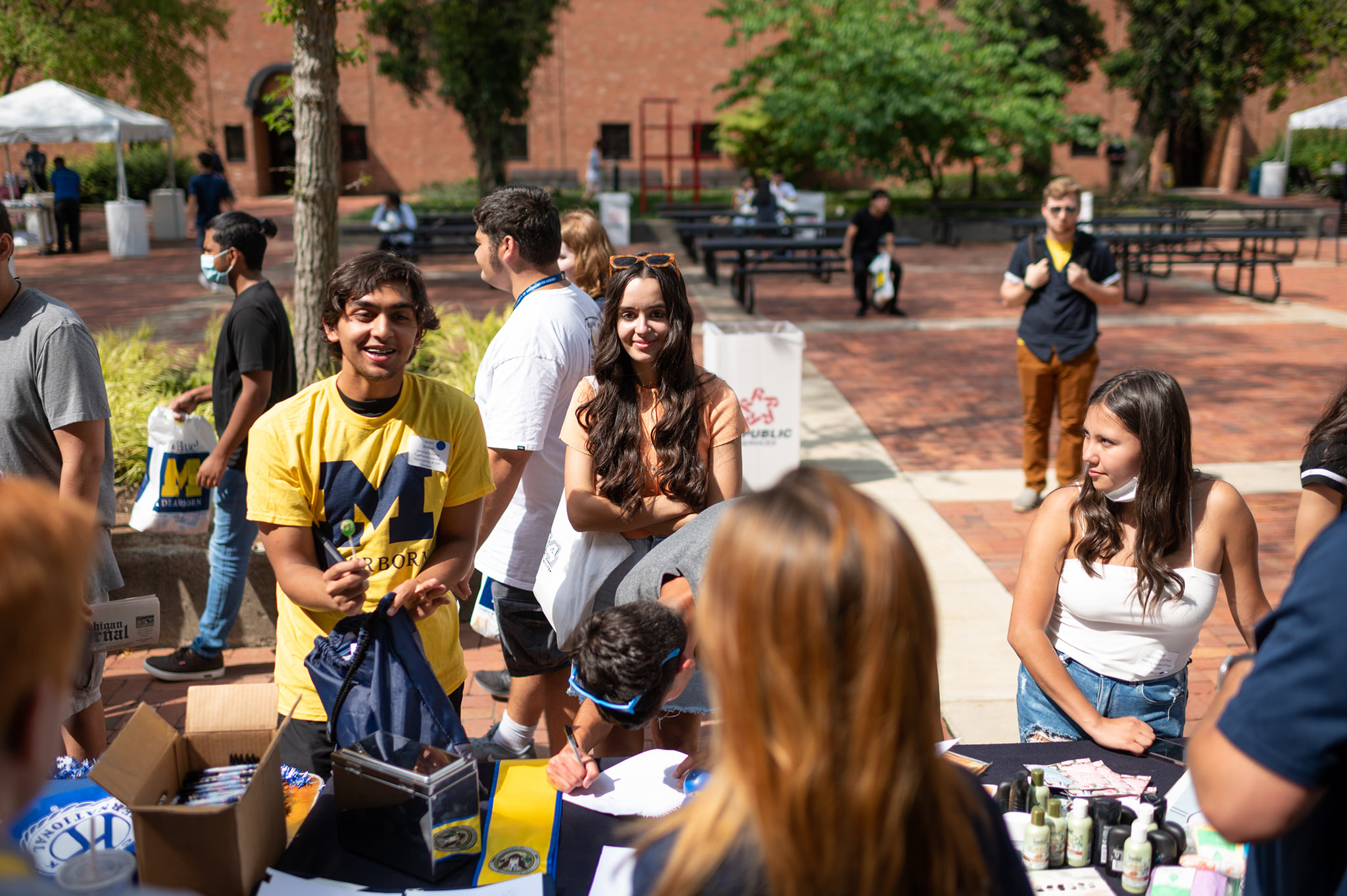
When asked about her impressions of the first week of classes and welcome-back festivities, Dean of Students Amy Finley didn’t have to reach to find a word that summed it all up. “Joy. Honestly that’s what I was seeing from my seat,” Finley says. “I think people were just so excited to be in a space with other people who weren’t part of their bubbles. And some of the fun was the faculty and staff seeing each other for the first time. It really had the vibe of a big welcome back party because so many folks hadn’t been on campus in so long.”
Starting on Tuesday last week, we did indeed witness multiple scenes that made the Fall 2021 semester feel a lot different than Fall 2020. Ahead of the official start of classes, Wolverine Welcome Day and the Go Blue Bash brought more than 800 students to campus for tours, workshops and a welcome-back party. Finley says she could tell the typical new student jitters were a little amplified, in part because it was not only first-year students but most sophomores who hadn’t had an in-person orientation to get them acclimated. At one point during the day, for example, she found herself helping a group of students and staff navigate to the Social Sciences Building. Some of them were new, but others had been part of the UM-Dearborn community for more than a year. That puts in perspective just how long the pandemic has been dragging on, leaving many of the things we love about campus life out of reach.
Over the past few weeks, it’s been an open question whether the fall semester could deliver something approaching a sense of normalcy. Starting in August, the Delta variant caused a surge in COVID cases in Michigan, which triggered a university vaccine requirement for faculty, staff and students. Faculty and staff vaccination rates were above 75 percent. But just days before classes were scheduled to start, the number of students reporting their vaccination status stood at just 39 percent. But what a difference a week makes. As of Monday, almost 66 percent of all students have submitted records documenting full vaccination and had them verified. That figure rises to more than 72 percent for students with in-person or hybrid classes. Many more students have submitted their vaccination information and are waiting for final verification. And right now, more than 6 percent of students have been approved for religious or medical exemptions.
ITS Director Carrie Shumaker, who has been co-leading the COVID Return to Campus committee and stepped up to help manage the vaccine and testing site last week, says she gets a little “misty” talking about what she’s witnessed at the clinic. Students patiently waiting in line, not getting frustrated with all the new protocols. Students going through the testing line once to get their own COVID test — then a second time to help a friend. And numerous vaccine cards — most dated from the early summer — proving that our students were doing what they could to end this pandemic all along. “We just didn’t know if they were going to be ready, because they hadn’t necessarily all told us about what they had done,” Shumaker says. “But they were so ready. They showed up with their vaccine cards and their masks on. It was just such a moment of maturity. To me, they were demonstrating how much they care about their classmates, how much they want to be here, and how much they want to be able to stay here all semester.”
That flood of goodwill from students means things have been going pretty smoothly at the vaccine and testing clinic, and at building entrances, where students are screened for a daily health check and vaccine policy compliance. Finley says, for example, she’s witnessed many students helping each other with the ResponsiBLUE app. And 85 faculty and staff have dropped everything at times to check-in students at screenings stations so they can get to class on time.
“We’ve seen faculty and staff — right up to senior campus leadership — jumping in on the doors,” Finley says. “And I think it says a lot that at this point in the pandemic, when people are so stretched and so tired, you basically have dozens of faculty and staff rolling up their sleeves, putting on their masks, asking where they should be deployed, and then getting to work.”



